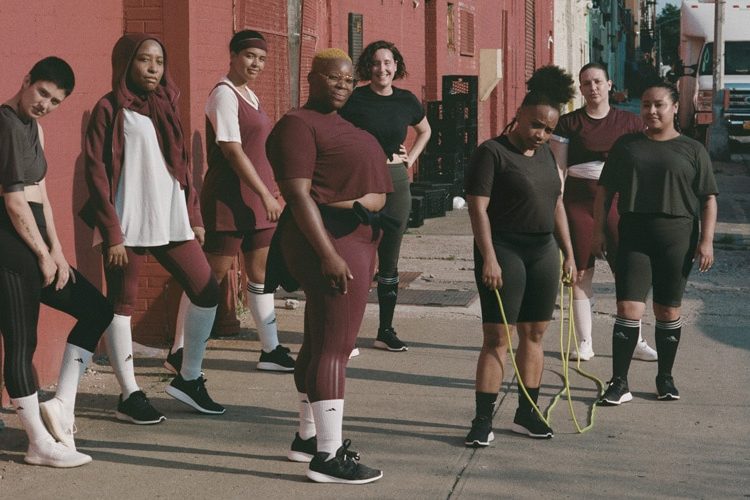Fierce, Fit, and Female: Adidas’ All-Inclusive Sizing Launches
The brand will offer sizes that range from XXS to 4XL.
Adidas is the first major athletic wear brand to include sizes that range from XXS to 4XL, setting a world record for body size inclusivity in the athleisure genre. They have started with a capsule collection that will expand to all types of garments in the near future. According to the VP of Adidas content development, Alison Stewart, “this is the first step…of a very long journey,” and this affirmation of slow and steady that wins the race, so to speak, blows the millennial concept of readily body love, out of the water. You don’t have to believe in the possibility of radical acceptance—it’s a work-in-progress. Since partnering with Universal Standard, the brand went from size 2x to 4x, harping on the other tried and true cliché, that teamwork makes the dream work.
Universal Studios director, Alexandra Waldman, reportedly mentioned that wearing clothing dedicated to fitness would enable someone to “be taken seriously” when stepping into a gym. Though this may ring true, the brand’s inclusivity can also be credited for permitting a wider demographic the value that particular material fabric and design athletic garments provide. More streamlined and breathable wear can better accommodate and enhance the exercise experience physically as much as wearing it does mentally. For example, in certain gyms, like Planet Fitness, inclusivity ironically becomes synonymous with a strict dress code: string tank tops and men’s muscle T-shirts are considered intimidating.
Adidas, despite not making every faction of their clothing line in sizes that go up to 4XL, a size larger than Nike’s maximum, 3XL, did begin with pieces notorious for not being flattering like the spandex biker shorts—Spanx-like Speedos that go just above the knee, and that had a moment in summer ‘19, leggings, and crop tops. In that respect, though they’re still running cross-country, there is no denying the sprint at the start of the race. The marketing photo: a group of women from diverse backgrounds against a wall, another holding a jump rope, in a 4-colorway spectrum of charcoal gray, black, white, and a merlot wine burgundy that screams fall. And in spite of the fall collection dropping at the beginning of the season, the prices are comparatively modest to competing cult brand Lululemon, an entrepreneurial entity like Outdoor Voices, ranging between $40 and $90.

Universal Standard’s approach to inclusivity is multipronged. It is less the number and is instead more a matter of access. Marketing ads ensured that in spite of different types of clothing on different shapes, all the garments would fit women’s bodies identically, setting an equal ground representation for consumers to assess the garments without any bias. Speaking of women, the branding focused on this sex so as to offset obvious aggression associated with female fitness models that made a concerted effort to detract away from traditional conceptions of feminism: “There is a huge percentage of women who just live in their bodies, and that state of being is an athletic action,” the brand explained. This formulaic strategy has contributed to previous collaborative successes with brands like J. Crew, which could explain why Adidas spearheaded the partnership.
In line with this thinking, that each one of these very different women—in their body and personality—could not be singled out for any commonality, much less sporting clothing from Universal Standard, has helped to forge a campaign in NYC subways. Beginning October 8, the new size-inclusive collection will only be sold in stores located in NYC, Portland, and Santa Monica.